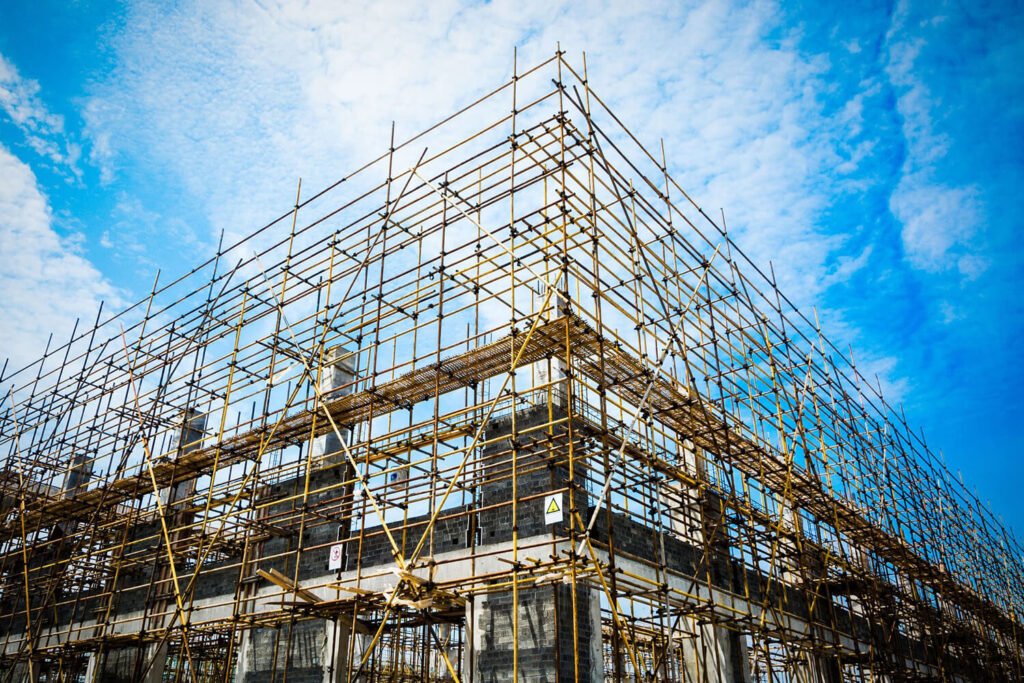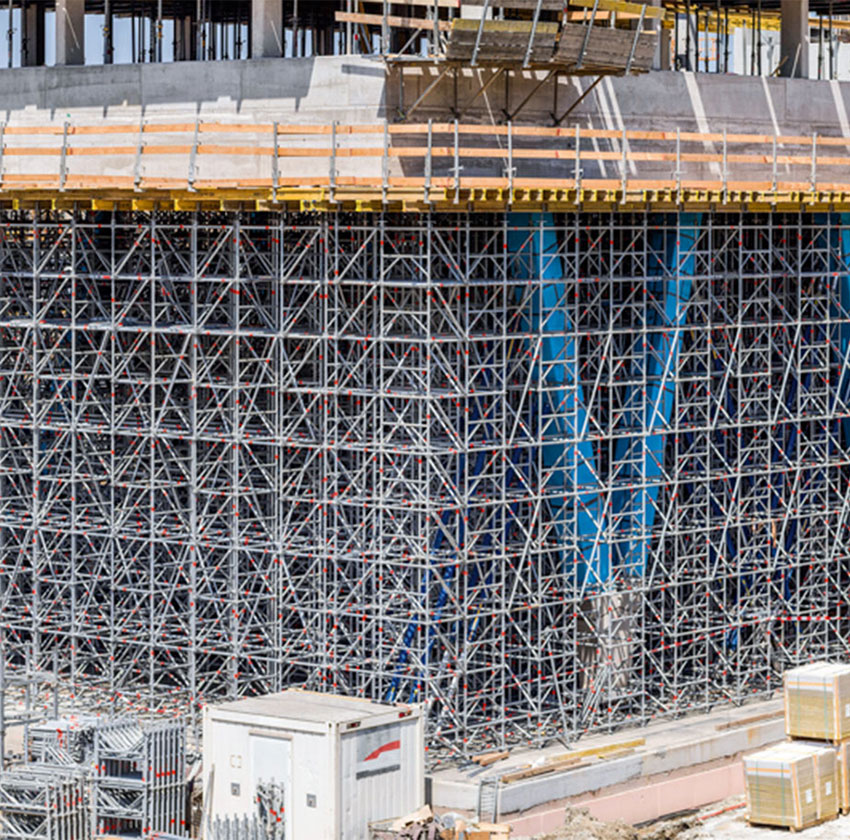High-Quality Residential Scaffolding for Seamless Home Renovations in Surrey
High-Quality Residential Scaffolding for Seamless Home Renovations in Surrey
Blog Article
Checking Out the Numerous Sorts Of Scaffolding Made Use Of in Construction Projects
The building and construction market counts greatly on different kinds of scaffolding to meet details job requirements, each offering unique benefits and applications. Typical framework scaffolding gives a durable structure for basic tasks, while put on hold scaffolding is important for job on high-rise frameworks.

Traditional Frame Scaffolding
Conventional structure scaffolding is just one of one of the most extensively made use of approaches in the building and construction sector as a result of its robustness and convenience. This system is composed of horizontal and upright structures that are set up to produce a steady platform for employees and materials. The primary parts consist of vertical blog posts, horizontal journals, and angled braces, which together offer a strong framework that can support significant loads.
One of the vital advantages of standard frame scaffolding is its adaptability to various construction jobs, varying from household buildings to huge commercial frameworks. The modular layout enables easy assembly and disassembly, making it reliable for both long-term and temporary tasks. In addition, the system can be customized in elevation and size, suiting different building styles and website problems.
Security is extremely important in scaffolding applications, and standard framework systems are equipped with guardrails and toe boards to stop falls and guarantee employee security. In addition, regular evaluations and adherence to security laws are crucial in preserving the integrity of the scaffold. Overall, typical structure scaffolding remains an essential choice in the building and construction sector, giving a reputable platform for labor and improving general job performance

Suspended Scaffolding
Put on hold scaffolding supplies a special service for construction tasks that call for access to raised surfaces, particularly in scenarios where typical framework scaffolding might be unwise. This sort of scaffolding is normally suspended from the roofing or top levels of a framework, utilizing a system of ropes, sheaves, and systems to create a functioning room that can be gotten used to different elevations.
One of the primary advantages of suspended scaffolding is its adaptability. It can be quickly rearranged or lowered to accommodate changes in building and construction needs, making it ideal for tasks such as window installment, façade work, and upkeep on skyscrapers. In addition, the minimal footprint of suspended scaffolding permits for better usage of ground room in metropolitan settings, where room is often restricted.
Safety and security is an important factor to consider in the usage of put on hold scaffolding. Overall, suspended scaffolding offers a effective and efficient solution for accessing hard-to-reach locations in numerous construction scenarios, enhancing both performance and security on website.
System Scaffolding
System scaffolding, frequently considered as a contemporary solution in the scaffolding industry, contains pre-engineered elements that can be rapidly set up and adjusted for different construction projects. Scaffolding. This kind of scaffolding is defined by its modular style, which allows for versatility and performance on work websites, accommodating various elevations and architectural requirements
Generally made from high-strength steel or light weight aluminum, system scaffolding uses enhanced sturdiness and stability. The components consist of upright blog posts, horizontal journals, and diagonal braces, which interconnect securely, making certain a durable structure. The layout typically incorporates standard fittings, streamlining setting up and disassembly procedures, therefore minimizing labor time and costs.

Rolling Scaffolding
Rolling scaffolding is a flexible choice to conventional fixed scaffolding, developed for flexibility and convenience of usage on building and construction websites. This kind of scaffolding is composed of a system sustained by frames with wheels, permitting workers to easily transfer it as needed. The mobility attribute substantially enhances productivity, as it minimizes downtime related to assembling and disassembling taken care of scaffolding.
Normally created from light-weight products such as light weight aluminum or steel, rolling scaffolding uses a durable yet portable remedy for projects needing regular repositioning - Scaffolding. It is specifically advantageous in tasks such as paint, drywall installation, and electrical job, where access to numerous elevations and places is needed
Safety and security is extremely important in rolling scaffolding style, with functions such as locking wheels to stop unexpected activity when in usage, and guardrails to secure employees from drops. Additionally, numerous versions are adjustable in elevation, accommodating different task needs.
Cantilever Scaffolding

The design of cantilever scaffolding generally includes utilizing brackets or arms secured to a building or framework, allowing the system to prolong outward safely. Safety is paramount; hence, these scaffolds should be crafted to withstand various lots and environmental conditions. Normal examination and maintenance are necessary to guarantee structural honesty and employee safety and security.
Cantilever scaffolding is preferred for its convenience and effective use space, making it a preferred selection in urban settings where room restrictions prevail. It facilitates easier access to high scaffolding vygotsky's theory altitudes, inevitably adding to the general performance of building jobs. Just like all scaffolding kinds, proper training and adherence to safety and security requirements are vital for employees making use of cantilever scaffolding.
Final Thought
Finally, the varied sorts of scaffolding used in building and construction tasks each look at this now serve distinct objectives customized to particular site demands. Standard frame scaffolding supplies security, while put on hold scaffolding provides convenience for elevated tasks. System scaffolding helps with fast assembly, and rolling scaffolding improves flexibility for varying job environments. Cantilever scaffolding efficiently resolves barriers in urban settings. Recognizing these scaffolding kinds is vital for maximizing safety and efficiency in building, eventually adding to the successful conclusion of tasks.
Traditional frame scaffolding supplies a strong structure for general tasks, while put on hold scaffolding is essential for work on skyscraper frameworks.Moving scaffolding is a flexible choice to traditional set scaffolding, developed for wheelchair and convenience of usage on building and construction websites. As with all scaffolding types, proper training and adherence to safety standards are vital for employees utilizing cantilever scaffolding.
Traditional frame scaffolding provides security, while put on hold scaffolding uses adaptability for elevated jobs. System scaffolding promotes fast assembly, and rolling scaffolding improves mobility for varying job environments.
Report this page